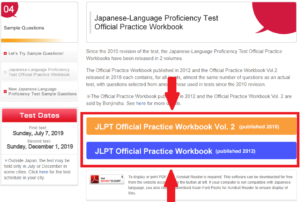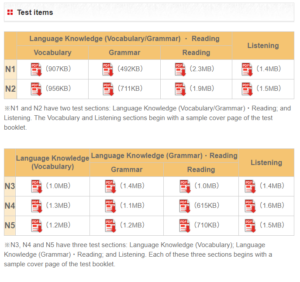Where can I get JLPT practice tests? Do I have to buy the practice workbook sold by Bojinsha? Where can I find listening, grammar, vocabulary, reading questions in the actual test format? These are probably the most frequent questions I get.
Download Two Free JLPT Practice Tests
No, you do not need to purchase anything. JEES (Japan Education Exchanges and Services, the creator of the JLPT) has released two practice tests for all JLPT levels (N1, N2, N3, N4, N5). Simply go to the official JLPT test site.
Download tests: https://www.jlpt.jp/e/samples/sampleindex.html Yes, it is
that easy! On the above page you will see two big buttons, one blue and one orange. There are currently two full-length practice tests available. One was released in 2012 and the other in 2018. Both practice tests are made up of actual questions that appeared on past JLPT exams.

Click on either of the buttons and you will be able to download a full-length practice test, complete with....
1. Vocabulary, Grammar, and Reading Questions

PDFs for vocabulary,…
 Click on either of the buttons and you will be able to download a full-length practice test, complete with....
Click on either of the buttons and you will be able to download a full-length practice test, complete with....  PDFs for vocabulary,…
PDFs for vocabulary,…